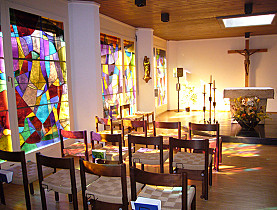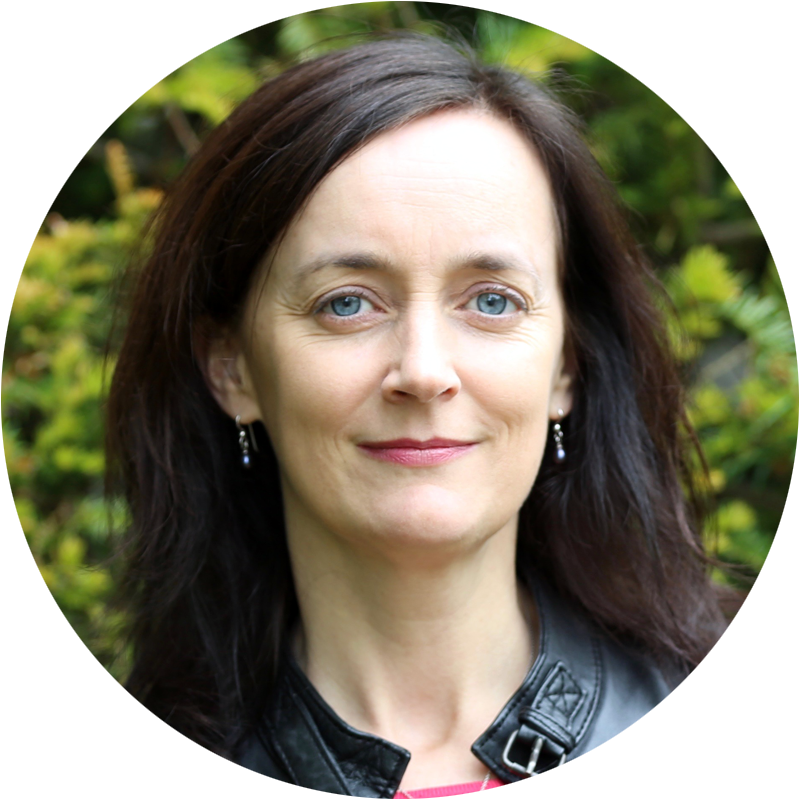
Fewer young men heed call to holy orders

The number of Roman Catholic priests in Switzerland has declined by a quarter in the past 15 years, leading to concerns about the future viability of the church.
Despite this crisis in vocations, some young men are still drawn to the life of a priest. swissinfo visited the Seminary of Sion to talk to those who are keeping the faith.
Built in 1975, the seminary in Fribourg, western Switzerland was meant to house 28 candidates for the priesthood. Today only nine of the simple rooms are occupied by priests-to-be.
But director Pierre-Yves Maillard, who himself trained at Sion, refuses to be downbeat about the changing times. “Things were a lot worse in the 14th century,” he quipped.
Maillard sees the problem as a reflection of society drifting away from the churches. “It’s logical that if there are fewer marriages, fewer baptisms, fewer faithful and fewer Christians, there is less room for vocations to emerge.”
The decline in vocations in the last generation is a phenomenon of developed countries, Maillard points out. Parts of Africa, Asia and South America are experiencing record numbers of priests and seminarians, and globally figures are at an all-time high.
The normal duration of the Sion seminary programme is seven years, including a combination of in-house and university studies in theology, liturgy, philosophy, psychology and pastoral care.
Families supportive
According to Maillard, the few Swiss candidates that do apply come from practising, religious families who support their choice.
“In my case my family were quite religious and so it was taken in a very positive sense as a great joy for everyone. My parents also helped me to find my path and when I made my final decision they were overjoyed,” second year student Pierre-Yves Pralong told swissinfo.
“One aspect of there being so few of us is that we are really like a family here. We are close and we know each other very well. That’s a positive side of the low numbers,” he added.
The atmosphere at lunchtime is convivial. After ten minutes of chanting prayers in the chapel the seminarians and their teachers sit down together and catch up.
When the conversation turns to the scarcity of vocations, the young men speak of their optimism and confidence for the future.
“One mustn’t forget that the church began with 12 people and I am hopeful that things will get better. One day these seminaries will be full again, I am very confident of that,” student Jacques Papaux declared.
Merging parishes
The bishops are perhaps less convinced of a reversal in this well-established trend. Some dioceses have already begun to merge parishes and form pastoral teams to cover areas, which were previously served by up to seven priests.
The teams boast one priest, the rest of the group being made up of deacons, lay theologians and pastoral assistants. These individuals can perform many but not all of the functions of a priest.
“The fewer priests we have the more difficult it will be to ensure the weekly Sunday services,” Judith Könemann of the Swiss Pastoral Sociological Institute (SPI) told swissinfo.
The Catholic institute recently released a report on the situation of the church in Switzerland, which showed that the decline in priest numbers was much more pronounced than the decline in church members.
“As the death rate among diocesan priests far exceeds the number of ordinations, a continuation in the drop in the workforce has to be expected,” the report concludes.
Celibacy stumbling block
As for foreign priests making up the shortfall in Switzerland, Könemann believes it is happening to some extent but is difficult to quantify because the dioceses do not keep data on country of origin.
Könemann sees three main reasons for the shortage of priests – celibacy, the loss of social status of the role and the ever-increasing workload on fewer numbers of priests.
“Celibacy is a radical choice which can be an obstacle for some people,” Maillard agrees. But he points out that other Christian churches that do allow their pastors to marry are also suffering the same problem of falling vocations.
Maillard prefers to take the longer view. “Today we are in a period of recession and that should worry us and give us cause for reflection. But it is not by any means catastrophic and it’s not the first time.”
The Swiss Pastoral Sociological Institute (SPI) recently published research on the state of the Swiss Catholic church, under the title Catholic Church in Switzerland – Figures, Facts, Developments. 1996–2005.
The report noted that in 1970, almost the entire Swiss population belonged either to the Roman Catholic Church or the Reformed Evangelical Church.
Up to the 1980s, most immigrants came from Catholic countries, cushioning the Catholic Church from a significant drop in membership.
In the 2000 census, just three-quarters of the population professed to be members of the main Christian churches.
Between 1991 and 2005, the number of Catholic diocesan priests in Switzerland declined by 24.6 %, according to the SPI report.
In the same period the number of seminarians fell sharply from 158 to 64 (not including the diocese of Lugano).

In compliance with the JTI standards
More: SWI swissinfo.ch certified by the Journalism Trust Initiative






























You can find an overview of ongoing debates with our journalists here . Please join us!
If you want to start a conversation about a topic raised in this article or want to report factual errors, email us at english@swissinfo.ch.